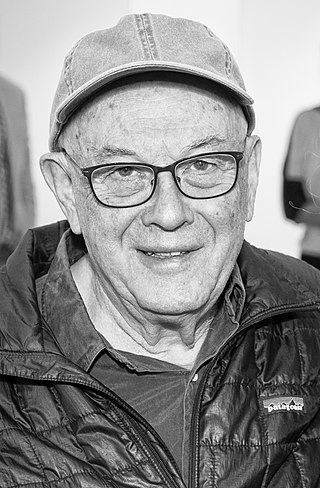
Ansel Easton Adams was an American landscape photographer and environmentalist known for his black-and-white images of the American West. He helped found Group f/64, an association of photographers advocating "pure" photography which favored sharp focus and the use of the full tonal range of a photograph. He and Fred Archer developed an exacting system of image-making called the Zone System, a method of achieving a desired final print through a deeply technical understanding of how tonal range is recorded and developed during exposure, negative development, and printing. The resulting clarity and depth of such images characterized his photography.

Pictorialism is an international style and aesthetic movement that dominated photography during the later 19th and early 20th centuries. There is no standard definition of the term, but in general it refers to a style in which the photographer has somehow manipulated what would otherwise be a straightforward photograph as a means of creating an image rather than simply recording it. Typically, a pictorial photograph appears to lack a sharp focus, is printed in one or more colors other than black-and-white and may have visible brush strokes or other manipulation of the surface. For the pictorialist, a photograph, like a painting, drawing or engraving, was a way of projecting an emotional intent into the viewer's realm of imagination.

Alfred Stieglitz was an American photographer and modern art promoter who was instrumental over his 50-year career in making photography an accepted art form. In addition to his photography, Stieglitz was known for the New York art galleries that he ran in the early part of the 20th century, where he introduced many avant-garde European artists to the U.S. He was married to painter Georgia O'Keeffe.
Paul Caponigro, is an American photographer from Boston, Massachusetts.
Lee Friedlander is an American photographer and artist. In the 1960s and 1970s, Friedlander evolved an influential and often imitated visual language of urban "social landscape," with many of his photographs including fragments of store-front reflections, structures framed by fences, posters and street signs.

Peter Henry Emerson was a British writer and photographer. His photographs are early examples of promoting straight photography as an art form. He is known for taking photographs that displayed rural settings and for his disputes with the photographic establishment about the purpose and meaning of photography.

The Nevada Museum of Art, is an art museum in Reno, Nevada.
Frank Gohlke is an American landscape photographer. He has been awarded two Guggenheim fellowships, two fellowships from the National Endowment for the Arts, and a Fulbright Scholar Grant. His work is included in numerous permanent collections, including those of Museum of Modern Art, New York; the Metropolitan Museum of Art; and the Art Institute of Chicago.

Bruce Landon Davidson is an American photographer. He has been a member of the Magnum Photos agency since 1958. His photographs, notably those taken in Harlem, New York City, have been widely exhibited and published. He is known for photographing communities usually hostile to outsiders.
Linda Connor is an American photographer living in San Francisco, California. She is known for her landscape photography.

Alice Boughton was an early 20th-century American photographer known for her photographs of many literary and theatrical figures of her time. She was a Fellow of Alfred Stieglitz's Photo-Secession, a circle of photographers whose artistic efforts succeeded in raising photography to a fine art form.
Nathan Lyons was an American photographer, curator, and educator. He exhibited his photographs from 1956 onwards, produced books of his own and edited those of others.
Peter Goin is an American photographer best known for his work within the altered landscape, specifically his photographs published in the book Nuclear Landscapes. His work has been shown in over fifty museums nationally and internationally and he is the recipient of two National Endowment for the Arts Fellowships. Goin is currently a Foundation Professor of Art in Photography and Videography at the University of Nevada, Reno. He has also done extensive rephotography work in the Lake Tahoe region.
Joseph Maurice Deal was an American photographer who specialized in depicting how the landscape was transformed by people.
"New Topographics: Photographs of a Man-Altered Landscape" was a groundbreaking exhibition of contemporary landscape photography held at the George Eastman House's International Museum of Photography from October 1975 to February 1976. The show, curated by William Jenkins, had a lasting impact on aesthetic and conceptual approaches to American landscape photography. The New Topographics photographers, including Robert Adams, Lewis Baltz, Bernd and Hilla Becher, Frank Gohlke, Nicholas Nixon, and Stephen Shore, documented built and natural landscapes in America, often capturing the tension between natural scenery and the mundane structures of post-war America: parking lots, suburban homes, crumbling coal mines. The photographs, stark and documentary, are often devoid of human presence. Jenkins described the images as "neutral" in style, "reduced to an essentially topographic state, conveying substantial amounts of visual information but eschewing entirely the aspects of beauty, emotion, and opinion.”

Jean Adolphe Braun was a French photographer, best known for his floral still lifes, Parisian street scenes, and grand Alpine landscapes.

50 Photographs is a photo book by American visual artist Jessica Lange, published by powerHouse Books on November 18, 2008. Featuring an introduction written by the National Book Award-winner Patti Smith, the art work distributed by Random House is the official debut of Lange as a photographer.

Janelle Lynch is an American artist whose images reveal an inquiry into themes of connection, presence, and transcendence. She uses an 8x10-inch view camera. While she photographed exclusively in the landscape for the first two decades of her career, Lynch's practice has expanded to include portraiture, still life, and cyanotype.

The Quin is a luxury hotel in New York City. It is located on 57th Street and Sixth Avenue in Midtown Manhattan, two blocks south of Central Park.

Robert Burley is a Canadian photographer of architecture and the urban landscape. He is based in Toronto, Canada, and is a Fellow of the Royal Society of Canada.











